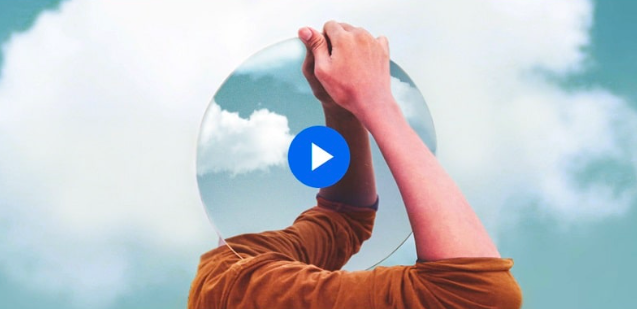Adobe Photoshop is a well-known photo manipulation application that is used by both designers and editors. It turns ordinary images into masterpieces. Its adaptability has made it popular in the creative realm because it is the most effective image editing software programme that provides you with excellent attributes for a great design.
There are numerous reasons to learn Photoshop. If you work in graphic design, web design, or user experience, you must learn Photoshop. However, learning Photoshop is also essential for those who work in hands-on marketing roles. Photoshop is required for optimising and retouching images when creating flyers, brochures, or email newsletters. Even if you are a beginner that has absolutely no knowledge of Photoshop or prior experience, you can still learn.
Adobe Photoshop skills are required if you work as a designer, marketer, visual communications employee, or in any other creative field. These seemingly specialised skills can come in handy at the most unexpected times. That is, those of you working in leadership, support, sales, and development may someday be required to use Photoshop’s visual prowess. This is the most popular programme for creating and editing visual content, and knowing how to use it is a universally recognised skill. Plus, Photoshop is appealing!
What are the benefits of Adobe Photoshop?
Photoshop can open up your job prospects!
Photoshop is a great skill to have if you’re just starting out in the workforce. Photoshop skills are required for many jobs, especially in design roles such as graphic designer, web designer, or user interface designer. Marketing positions frequently require someone who is proficient in Photoshop. In a competitive job market, learning Photoshop skills can help you stand out from the crowd.
You can correct photography mistakes!
You can readjust or enhance your photo if it does not look good or has specific flaws. It can hide poor lighting, photo marks, dark images, red eyes, and a variety of other flaws. You can also crop the image if necessary. You can use a brush to change the marks and also match the colours to the existing image. There are numerous ways to improve the photograph.
Adobe Photoshop enables you to correct or enhance your photographs without the assistance of a professional photographer or photo editor. You will be able to work on photos and backgrounds whether you work for others or on your own project.
It lets you dabble with animations!
GIFs are fantastic! GIFs are the most efficient way to share ideas and expressions on social media platforms such as Twitter, Facebook, and Reddit. They are adaptable and can be used almost anywhere. You can create an animated GIF in Photoshop by using images, illustrations, or even video clips. You can also change the appearance of all the frames and add special effects. These items have become popular if you want to make any promotional items more appealing and appealing. Most industries use video and small gifs to promote their products.
Photoshop can improve your career!
If you already have a job, adding Photoshop to your skill set can help you become a more valuable employee. It enables you to work on a variety of additional projects and may provide opportunities for advancement or a more diverse set of projects. Photoshop can help with everything from website design to marketing projects and even product design. After learning Photoshop, you can earn money in a variety of ways. There are freelance opportunities for retouching images in Photoshop, as well as full-time jobs with good pay for those willing to learn related skills and work in graphic design, web design, or UX design. All of these fields allow Photoshop skills to be used to earn money.
Photoshop saves money!
Having a skill that allows your company to avoid hiring someone from outside the company adds value and saves money. Similarly, if you need business cards, posters, or even basic website detailing, knowing how to do it yourself saves you the money and time it would take to find the skills elsewhere. Photoshop is a valuable skill that can increase your employability. You can also design for others through contract work; the possibilities are limitless.
It is a fun and creative skill!
While learning Photoshop can help you advance in your career, it can also be personally rewarding. Photoshop skills can be put to use in a variety of ways, such as retouching images, creating compositions with text and graphics, or creating a funny animated GIF. You’ll also have a fun outlet for your creative projects if you learn Photoshop, whether you’re working on a website, volunteering to help with images for friends or an organisation, or adding some fun to images you share on social media. Photoshop is a powerful business tool, but it also has a playful side. Photoshop does not limit you by money, tools, or experience. The programme is fairly simple to use, and as with anything, the more you practise, the more you can create. The list of Photoshop features is nearly endless, and each new feature you try out provides you with a new opportunity to hone your skills and flex your creative muscles.
Some things that you can use Photoshop for
- Website Mockups
When creating a website, many people begin by drawing it. Some developers can easily translate my sketches into code, but you can’t show them messy drawings when they want to see at least three mockups. Photoshop comes into play here. Making website mockups is very simple, and you can move things around and make many changes before you start coding.
- Worksheets & Printables
You can create worksheets, templates for daily schedules, menu plans, shopping lists and anything else that you need to have a template for. The designs can be modified based on your requirements, and you can add or alter elements of each of your printables. You can create them and share them with others if you’d like, but you need to make sure that they are at a minimum of 150 dpi.
- Infographics
If you want your posts to be shared on social media, infographics are ideal. They are simple to make in Photoshop because you will be working with layers and folders as well as creating a template.
- Sidebar Ads
Create a blog button with your logo or text and promote it on other blogs. If you want to include other blogs or advertisements in your sidebar, you can use Photoshop to optimise the images and make them fit.
- Colour Palettes
You can choose any image you’d like and then create a colour palette based on the image. Photoshop allows you to save your colour schemes and use them again later, when you need them.
- Mood Boards
Photoshop makes it simple to create mood boards. Simply resize all of your images to fit together, crop them, and rearrange them to fit the template. Moodboards can be used for your blog, client work, or even to redecorate your home. Making photo collages from your vacation photos is also enjoyable and simple.
- Blog/ Email Signatures
You can use Photoshop to create a simple blog signature by using the text tool and possibly adding a small graphic. You can even use a graphic tablet connected to your computer to write your name. Other graphics for your blog, such as borders or buttons, are available.
Photoshop is the most versatile tool available. Photoshop includes all of the tools required for successful design work. There are very few limitations to Photoshop. It includes everything you’ll need to make graphics and other visual designs. Few other programmes allow you to edit and design at such a detailed level without extensive skill and practise. Photoshop is also extremely simple to learn. Adobe Photoshop Courses are available on a variety of platforms and websites. You can also learn Photoshop as quickly as you want, whether it’s in a week if you want to gain in-depth skills through a boot camp programme, or just in two days if you want to gain essential Photoshop skills.
There are even specific Adobe Photoshop Course for people in the fashion industry like fashion and fabric designers. There are many advanced textile programmes on the market, but their prices are several times higher than Photoshop, making them unaffordable for most businesses. Furthermore, corporations frequently use different programmes, making it difficult to apply your previous experience, whereas most companies have Photoshop. Adobe Photoshop is the perfect software for fabric design because it allows you to tweak your designs whenever required, as opposed to a physical rendering. The Print School offers comprehensive Adobe Photoshop Courses that are tailored to cater to specific requirements and skill sets, so whether you are a beginner just starting in the realm of fabric design, or you are a well-established textile designer who wants to branch out into a different style or look, they have courses that will appeal to you. Their Photoshop for Textile Design course will teach you everything you need to know about textiles and design in order to create a beautiful, illustrated print design to a professional standard. They not only assist you in honing your skills, but they also teach you how to avoid wasting time on outdated techniques and bad advice. If you want to learn Adobe Photoshop, brush up on your skills or learn a specific technique, The Print School has a course for you. You can click here to know more.











